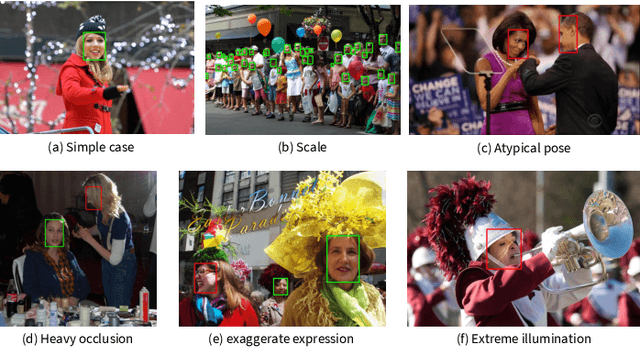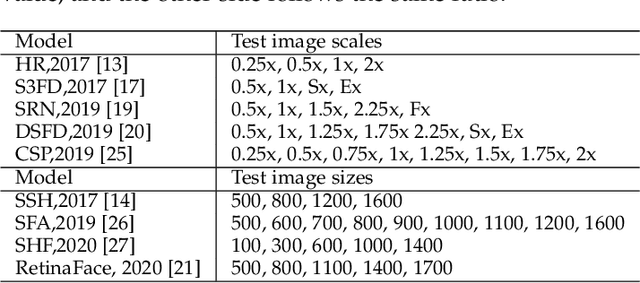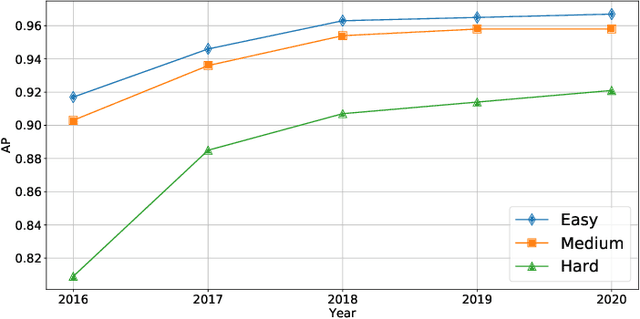Detect Faces Efficiently: A Survey and Evaluations
Paper and Code
Dec 03, 2021



Face detection is to search all the possible regions for faces in images and locate the faces if there are any. Many applications including face recognition, facial expression recognition, face tracking and head-pose estimation assume that both the location and the size of faces are known in the image. In recent decades, researchers have created many typical and efficient face detectors from the Viola-Jones face detector to current CNN-based ones. However, with the tremendous increase in images and videos with variations in face scale, appearance, expression, occlusion and pose, traditional face detectors are challenged to detect various "in the wild" faces. The emergence of deep learning techniques brought remarkable breakthroughs to face detection along with the price of a considerable increase in computation. This paper introduces representative deep learning-based methods and presents a deep and thorough analysis in terms of accuracy and efficiency. We further compare and discuss the popular and challenging datasets and their evaluation metrics. A comprehensive comparison of several successful deep learning-based face detectors is conducted to uncover their efficiency using two metrics: FLOPs and latency. The paper can guide to choose appropriate face detectors for different applications and also to develop more efficient and accurate detectors.
 Add to Chrome
Add to Chrome Add to Firefox
Add to Firefox Add to Edge
Add to Edge